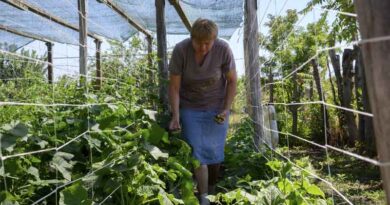Giving Smallholder Farmers Due Recognition
08 July 2022, India: The recently released “State of Food Security and Nutrition 2022” report paints a grim picture. The number of people suffering from hunger in 2021 is estimated between 702 million and 828 million (corresponding to 8.9% and 10.5% of the world population respectively). This is 150 million more people than it was before the pandemic. The report begins with the disquieting line:
“With eight years remaining to end hunger, food insecurity and all forms of malnutrition (Sustainable Development Goals [SDGs] Targets 2.1 and 2.2), the world is moving in the wrong direction.”
The prevalence of undernourishment (SDG Indicator 2.1.1) jumped from 8% in 2019 to 9.8% in 2021.
Regional disparities remain with Africa bearing the heaviest burden with one in five people in Africa (20.2% of the population) facing hunger in 2021 compared to 9.1% in Asia. Taken together, these two continents account for close to one-third of the world’s population facing hunger. In 2021, moderate and severe food insecurity rose with 29.3% of the global population, around 2.3 billion people, facing moderate or severe food insecurity, and 11.7% (923.7 million people) facing severe food insecurity. There is also a growing gender gap in food insecurity. In 2021, 31.9% of women in the world were moderately or severely food insecure compared to 27.6% of men. This gap of more than 4 percentage points has increased compared with the 3-percentage point gap in 2020. The nutrition indicators paint a similar picture of “… moving in the wrong direction”.
Earlier this year, the Intergovernmental Panel on Climate Change (IPCC) 2022 report documented in very clear terms the widespread pervasive impacts of human-induced climate change on ecosystems, people, settlements, and infrastructure. In the case of agriculture, the report clearly documented that increases in frequency and intensity of climate extremes have reduced food and water security, hindering efforts to meet the SDGs. Although overall agricultural productivity has increased, climate change has slowed this growth globally over the past 50 years. Increasing incidences of extreme weather and climate events have exposed millions of people to acute food insecurity and reduced water security, with the largest impact observed in Africa, Asia, Central and South America, and island nations. Low-income households across all regions have been severely impacted.
Climate change impacts will put pressure on food production and undermine food and nutrition security. A warming climate progressively weakens soil health and ecosystem services such as pollination, increases pressure from pests and diseases, and undermines food productivity in many regions.
The need to shift towards a resilient, sustainable, nutritious, more productive and less wasteful food system is most pressing today. Current food systems and large-scale industrial farming systems are not serving the needs of the poor and marginalized while smallholder farmers, who produce more than 50% of the world’s food needs (some estimates put it at 70%), are being ignored. Smallholder farmers typically produce low quantities and yields, lack the skill to access markets, use low levels of on-farm and off-farm technology and primarily rely on family labor. Since their farms are small and marginalized, profit levels tend to be low due to high transaction costs.
On the other hand, the contribution of small farms to the rural economy can be significant. Smallholder farmers generate an estimated 40-60% of the rural income from on-farm and off-farm activities. This underlines the importance of small-scale agriculture in the rural economy and proves that agriculture can be the engine of growth for rural prosperity.
Public policy has a critical role to ensure smallholder farms can help meet food and nutrition security by providing appropriate incentives to producers. However, policies often favor larger producers who can generate significant marketable surpluses. The right policy orientation entails the development of mechanisms to leverage greater private sector participation in value chain development to the benefit of smallholders. Such mechanisms can promote the development of business activities by smallholders, reduce transaction costs and build trust between smallholders, traders and processors. Interventions must be tailored to reflect the characteristics of different product chains, their level of development, heterogeneity of smallholders and the constraints they face in addition to the capacity of the private sector to overcome these constraints.
The International Crops Research Institute for the Semi-Arid Tropics (ICRISAT) has demonstrated the viability of the above approach through its value chain development activities. Projects such as supported by the public sector (Department of Tribal Welfare, Government of Telangana, India) and the private sector (Walmart Foundation) have demonstrated that involving smallholder farmers in value chain development results in enhanced household income, empowerment of women through training and participation in decision-making, enhanced household nutrition and food security and an improved rural economy. Given the right policy push, smallholder farmers can have a significant role in reversing the backslide in achieving the SDGs.
Also Read: UPL Announces Inaugural Allies for Agriculture Winner















